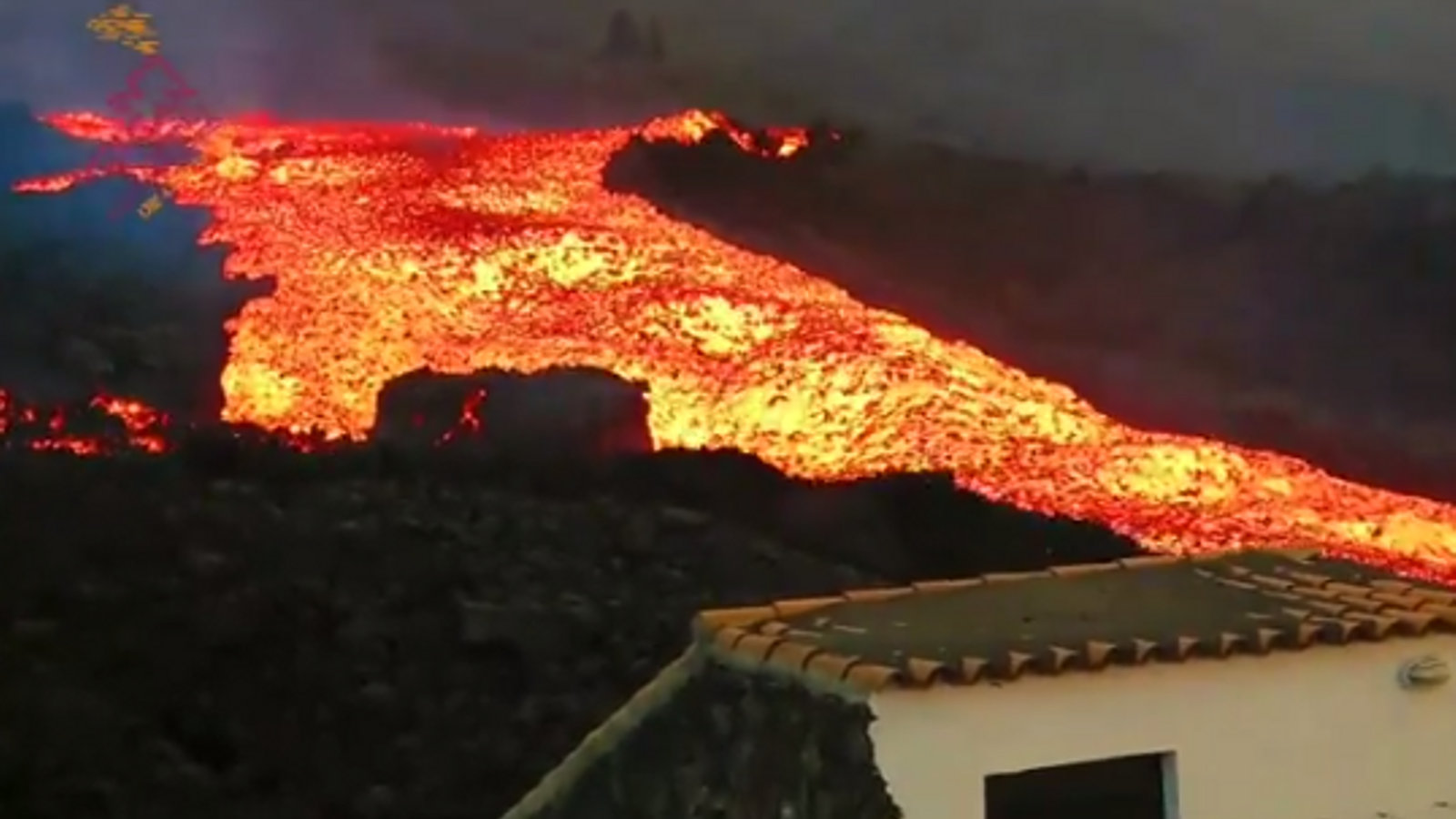La Palma volcano's lava river increases in speed
Cumbre Vieja volcano expels oceanic sediments prior to the island's formation

The eruption of the Cumbre Vieja volcano has gone through several explosive and effusive phases, in which the lava flowed steadily but advanced slowly. Now the volcano on La Palma has for some hours combined this rhythm with much faster lava effusions, which at some point geologists have described as a true magma "tsunami". The emergency services are awaiting the evolution of the eruption to decide whether to evacuate more citizens. This Thursday the authorities made 300 more residents leave the area of Los Llanos de Aridane. So far, 6,800 people have had to leave their homes because of the eruption.
During the four weeks of activity, the volcanologist of the Centre for Scientific Research (CSIC) Vicente Soler has also detected that the volcano has expelled oceanic sediments prior to the formation of the island of La Palma, more than two million years ago. These are pre-existing rocks that flow along with the magma. This phenomenon, as explained by the expert to Efe agency, is common in many volcanic eruptions, although in the Canary Islands it was recorded for the first time ten years ago, during the eruption of the Tagoro volcano on the island of El Hierro.
In the last hours the attention of scientists is focused on the overflows of the volcano's lava channel. The Volcanological Institute of the Canary Islands (Involcan) has captured one that flowed at high speed.
The most worrying lava flow
The lava tongue that most worries the authorities and investigators now is the one located further north and advancing in a northeasterly direction with two rivers: one with high intensity and a wide course, and another that crossed the industrial area of the Laguna neighbourhood diagonally yesterday. This is the one that forced the evacuation of 300 more residents of the area yesterday.
Seismic records indicate that earthquakes have increased but still are at great depth. According to the authorities, the air quality is "reasonably good" and that is why the airport of La Palma has also remained operational. As for the water quality, a boat provided by the Ministry for Ecological Transition, along with two portable desalination plants, will provide water to the cultivated areas - especially to banana plantations - to ensure their maintenance and survival. The intention of the Canarian government is that on Monday classes can resume in schools in Los Llanos de Aridane, El Paso and Tazacorte. The eruption left 4,606 students and 583 teachers without classes.
